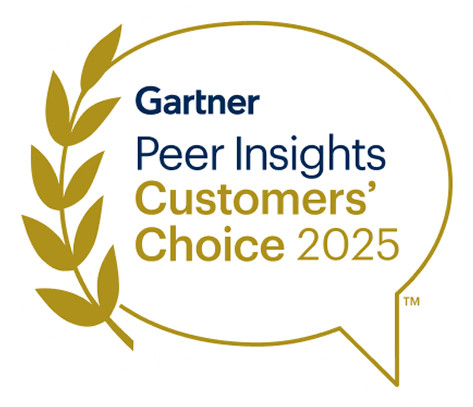Enhancing AI Governance: The Crucial Role of Data Security
In today’s hyper-connected world, where big data powers decision-making, artificial intelligence (AI) is transforming industries and user experiences around the globe. Yet, while AI technology brings exciting possibilities, it also raises pressing concerns, particularly related to security, compliance, and ethical integrity.
As AI adoption accelerates - fueled by increasingly vast and unstructured data sources, organizations seeking to secure AI deployments (and investments) must establish a strong AI governance initiative with data governance at its core.
This article delves into the essentials of AI governance, outlines its importance, examines the challenges involved, and presents best practices to help companies implement a resilient, secure, and ethically sound AI governance framework centered around data.
What is AI Governance?
AI governance encompasses the frameworks, practices, and policies that guide the responsible, safe, and ethical use of AI systems across an organization. Effective AI governance integrates technical elements—data, models, and code—with human oversight for a holistic framework that evolves alongside an organization’s AI initiatives.
Embedding AI governance, along with related data security measures, into organizational practices not only guarantees responsible AI use but also long-term success in an increasingly AI-driven world.
With an AI governance structure rooted in secure data practices, your company can:
- Mitigate risks: Ongoing AI risk assessments can proactively identify and address potential threats, such as algorithmic bias, transparency gaps, and potential data leakage; this ensures fairer AI outcomes while minimizing reputational and regulatory risks tied to flawed or opaque AI systems.
- Ensure strict adherence: Effective AI governance and compliance policies create clear accountability structures, aligning AI deployments and data use with both internal guidelines and the broader regulatory landscape such as data privacy laws or industry-specific AI standards.
- Optimize AI performance: Centralized AI governance provides full visibility into your end-to-end AI deployments一from data sources and engineered feature sets to trained models and inference endpoints; this facilitates faster and more reliable AI innovations while reducing security vulnerabilities.
- Foster trust: Ethical AI governance practices, backed by strict data security, reinforce trust by ensuring AI systems are transparent and safe, which is crucial for building confidence among both internal and external stakeholders.
A robust AI governance framework means your organization can safeguard sensitive data, build trust, and responsibly harness AI’s transformative potential, all while maintaining a transparent and aligned approach to AI.
Why Data Governance Is at the Center of AI Governance
Data governance is key to effective AI governance because AI systems require high-quality, secure data to properly function. Accurate, complete, and consistent data is a must for AI performance and the decisions that guide it. Additionally, a strong data access governance platform enables organizations to navigate complex regulatory landscapes and mitigate ethical concerns related to bias.
Through a structured data governance framework, organizations can not only achieve compliance but also leverage data as a strategic asset, ultimately leading to more reliable and ethical AI outcomes.
Risks of Not Having a Data-Driven AI Governance Framework
AI systems are inherently complex, non-deterministic, and highly adaptive—characteristics that pose unique challenges for governance.
Many organizations face difficulty blending AI governance with their existing data governance and IT protocols; however, a centralized approach to governance is necessary for comprehensive oversight.
Without a data-centric AI governance framework, organizations face risks such as:
- Opaque decision-making: Without clear lineage and governance, it becomes difficult to trace and interpret AI decisions, which can lead to unethical, discriminatory, or harmful outcomes.
- Data breaches: AI systems rely on large volumes of data, making rigorous data security protocols essential to avoid leaks of sensitive information across an extended attack surface covering both model inputs and outputs.
- Regulatory non-compliance: The fast-paced evolution of AI regulations means organizations without a governance framework risk large penalties for non-compliance and potential reputational damage.
For more insights on managing AI and data privacy compliance, see our tips for security leaders.
Implementing AI Governance: A Balancing Act
While centralized, robust AI governance is crucial, implementing it successfully poses significant challenges. Organizations must find a balance between driving innovation and maintaining strict oversight of AI operations.
A primary issue is ensuring that governance processes are both adaptable enough to support AI innovation and stringent enough to uphold data security and regulatory compliance. This balance is difficult to achieve, particularly as AI regulations vary widely across jurisdictions and are frequently updated.
Another key challenge is the demand for continuous monitoring and auditing. Effective governance requires real-time tracking of data usage, model behavior, and compliance adherence, which can add significant operational overhead if not managed carefully.
To address these challenges, organizations need an adaptive governance framework that prioritizes privacy, data security, and ethical responsibility, while also supporting operational efficiency and scalability.
Frameworks & Best Practices for Implementing Data-Driven AI Governance
While there is no universal model for AI governance, your organization can look to established frameworks, such as the AI Act or OECD AI Principles, to create a framework tailored to your own risk tolerance, industry regulations, AI use cases, and culture.
Below we explore key data-driven best practices—relevant across AI use cases—that can best help you structure an effective and secure data-centric AI governance framework.
Adopt a Lifecycle Approach
A lifecycle approach divides oversight into stages. Implementing governance at each stage of the AI lifecycle enables thorough oversight of projects from start to finish following a multi-layered security strategy.
For example, in the development phase, teams can conduct data risk assessments, while ongoing performance monitoring ensures long-term alignment with governance policies and control over data drift.
Prioritize Data Security
Protecting sensitive data is foundational to responsible AI governance. Begin by achieving full visibility into data assets, categorize them by relevance, and then assign risk scores to prioritize security actions.
An advanced data risk assessment combined with data detection and response (DDR) can help you streamline risk scoring and threat mitigation across your entire data catalog, ensuring a strong data security posture.
Adopt a Least Privilege Access Model
Restricting data access based on user roles and responsibilities limits unauthorized access and aligns with a zero-trust security approach. By ensuring that sensitive data is accessible only to those who need it for their work via least privilege, you reduce the risk of data breaches and enhance overall data security.
Establish Data Quality Monitoring
Ongoing data quality checks help maintain data integrity and accuracy, meaning AI systems will be trained on high-quality data sets and serve quality requests. Implement processes for continuous monitoring of data quality and regularly assess data integrity and accuracy; this will minimize risks associated with poor data quality and improve AI performance by keeping data aligned with governance standards.
Implement AI-Specific Detection and Response Mechanisms
Continuous monitoring of AI systems for anomalies in data patterns or performance is critical for detecting risks before they escalate. Anomaly detection for AI deployments can alert security teams in real time to unusual access patterns or shifts in model performance. Automated incident response protocols guarantee quick intervention, maintaining AI output integrity and protecting against potential threats.
A data security posture management (DSPM) tool allows you to incorporate continuous monitoring with minimum overhead to facilitate proactive risk management.
Conclusion
AI governance is essential for responsible, secure, and compliant AI deployments. By prioritizing data governance, organizations can effectively manage risks, enhance transparency, and align with ethical standards while maximizing the operational performance of AI.
As AI technology evolves, governance frameworks must be adaptive, ready to address advancements such as generative AI, and capable of complying with new regulations, like the UK GDPR.
To learn how Sentra can streamline your data and AI compliance efforts, explore our data security platform guide.
Or, see Sentra in action today by signing up for a demo.
<blogcta-big>











.webp)
.webp)


